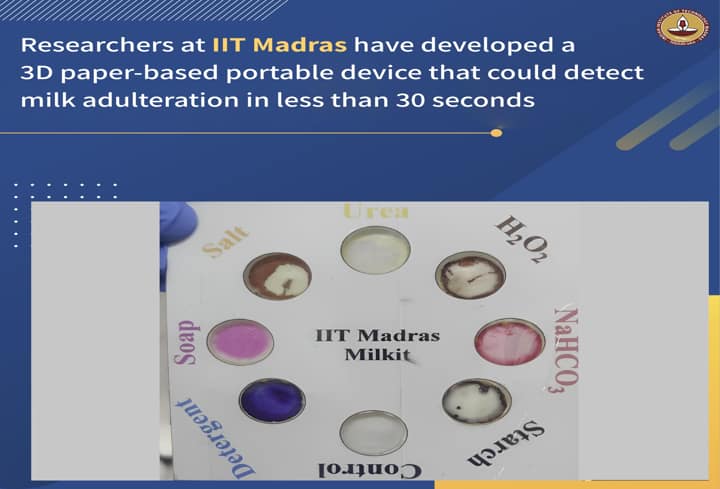With milk adulteration becoming rampant across the country and causing damage to the health of thousands of men, women and children, there is an urgent need to check this illegal activity. Now Indian Institute of Technology Madras has developed a 3D paper-based device to detect this adulteration.
What makes this device unique and useful is that it is cost-effective, portable and able to detect the adulteration in 30 seconds. Moreover, unlike other conventional laboratory-based methods, it can be used at home and requires a sample of only a millilitre of milk to test for adulterants.
Using this 3D paper one can find out the adulterating agents that are usually used in the milk. These include soap, detergents, urea, hydrogen peroxide, salt, sodium-hydrogen-carbonate and starch among others.
This microfluidic device has a top and bottom cover and in the middle is the sandwich structure. This design enables the denser liquids to move at a consistent speed.
Reagents are used to treat the paper and thereafter it is left to dry. The two paper layers are then adhered to both sides of the support after drying, and the covers adhere with double-sided tape. Using Whatman filter paper grade 4 allows for the liquid flow and also storage of more reagents.
Leading the research was Dr. Pallab Sinha Mahapatra, Associate Professor in the Department of Mechanical Engineering at IIT Madras. Other members of the team were Subhashis Patari and Driyankan Datta, both research scholars. Together they have authored a research paper published in the peer-reviewed journal Nature.
Dr. Mahapatra informed that all the reagents in the device are dissolved either in distilled water or ethanol, depending on their solubility. Using colorimetric detection techniques all adulterants in different liquid samples are detected.
The device’s reagent reacts only with specific adulterants and not with any milk ingredients, making it an effective analytical tool to monitor food safety of the liquid.
Adulterated milk causes serious health issues like diarrhoea, death of infants, kidney problems, gastrointestinal complications, and cancer.




















